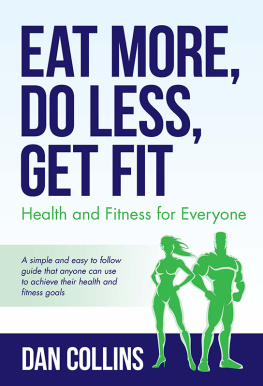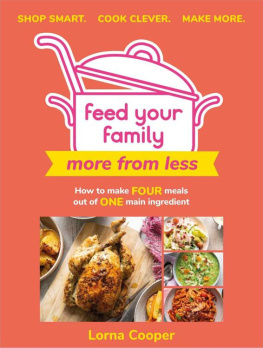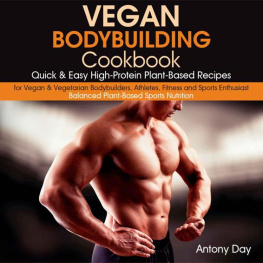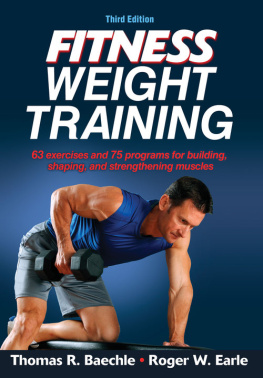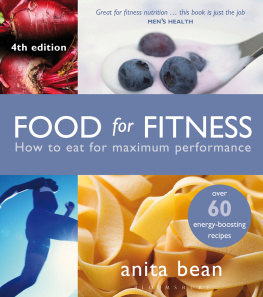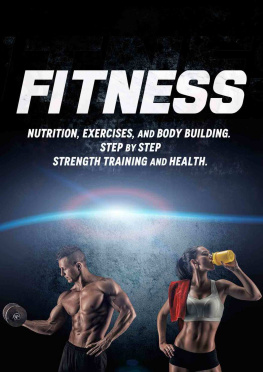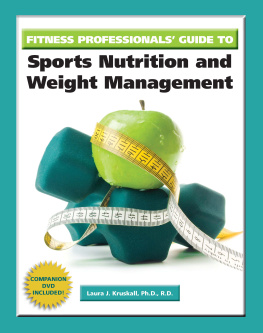HOW TO USE THIS eBOOK
Feed Your Fitness is a one-stop nutritional eBook designed for the athlete in you and in your family. This eBook has been categorized into four parts - How to Feed Your Athlete, Recipes for Training, Recipes for Competition and Recipes for Recovery that provide specific information on the nutritional needs of both endurance and strength athletes and helps you choose the best foods for the type of sports you participate in.
To navigate, use the guide at the end of the eBook, both of which have built in links to take you to the relevant chapters and recipes. The Recipes by Nutrient Content guide acts as an instant reference of the different recipes under each nutrient, making it easier to select the recipes you want to cook.
The recipes are divided into three groups Recipes for Training, Recipes for Competition and Recipes for Recovery these are further subdivided into drinks, portables, soups, salads, mains, sides, and desserts.
Most recipes have a photograph of the finished dish to inspire you and show you exactly what you are aiming for. The image appears both as a thumbnail next to the recipe name and as a full-page image at the end of the recipes. All of the pictures in this eBook will enlarge if you double tap on them. To continue reading, simply close the image using the X in the top corner.
Introduction
As an athlete, your body needs specific macro- and micronutrients to be a well-fuelled, powerful, athletic machine. But how do you get all those nutrients in your diet, and when should you consume them in relation to your workout or athletic event? How many calories do you need, and how do you break down all this information into specific meals?
Icons
The recipes in this guide feature icons that point out recipes geared for specific nutritional needs:
Fat Conscious
Keeps calories down (fat is very calorie dense) to help prevent weight gain
Protein Rich
Important for strength and rebuilding muscle
Carbohydrate Rich
Provides important fuel for endurance and high intensity activities
High Fibre
Is ideal for larger meals 35 hours before activity
Easily Digestible
Best for digestion before and during training sessions and competitions
We designed Feed Your Fitness to be your one-stop nutrition guide for the athlete in you and in your family. In these pages, you have access to a wealth of nutritional knowledge as well as more than 80 power-packed recipes and variations to fuel your body.
You can learn the basics of nutrition, and why macronutrients (carbohydrates, proteins, and fats) as well as various micronutrients (vitamins and minerals) are important for every athlete. You can also explore fluids and electrolytes and the role they play in your performance on the field, in the gym, and more.
Feed Your Fitness provides specific information on the nutritional needs of both endurance and strength athletes and helps you choose the best foods for the type of sports you and your family members participate in. We help you stock your pantry, select essential cooking tools, and even give you hints on quick-cooking methods and meal assembly. We also provide easy-to-follow information on making real-food portables and homemade sports drinks and smoothies, leaving out all the mystery ingredients from shop-bought options.
A nutritional analysis is included for each recipe so that you can use them to help meet your dietary needs.
Whether youre training for a sporting event like a triathlon or just working out at the gym, you need the right kind of fuel, in the right amount, at the right times. In the following pages we explain what you need to know in order to feed yourself the essential nutrients you need, when you need them.
To make the feeding part easier, we help you stock your kitchen with essential ingredients, and give you the tools you need to easily and efficiently prepare recipes. Finally, we give you quick-cooking and meal-assembly tips and pointers on preparing your own portables and sports drinks. Eating well has never been easier.
From Food to Fuel
When you eat food, it goes through a series of chemical reactions inside your body, with the end products being carbon dioxide, water, heat, and energy in the form of a chemical called adenosine triphosphate (ATP). The energy needed to perform physical activity is produced from the breakdown of chemical bonds found in carbohydrates, proteins, and fats, and the production of ATP.
Where energy comes from
Most energy is provided from the breakdown of carbohydrates and fats. Protein is rarely used as an energy source because the amino acids in protein are used for building and maintaining muscle, although the body can use protein as an energy source when carbohydrate intake is inadequate. The liver and muscles can store glucose as glycogen for later use as well as fat, in the form of intramuscular triglycerides, as an additional energy source.
Muscle cells also contain a chemical called phosphocreatine, which provides energy during high-power, short-duration activities that last a few seconds, such as sprinting, weightlifting, throwing, or a tennis serve. Muscle cells store only a small amount of phosphocreatine but can replenish ATP very quickly by donating phosphorus molecules to form new ATP molecules. Although this does not generate a large amount of ATP, it serves as an additional energy system to supply small amounts of ATP very quickly to muscle cells when the demand for energy is very high.
The process of glycolysis
As ATP is consumed, the by-products of this reaction begin to build up and trigger another energy system, glycolysis, to increase its ATP production. Glycolysis is an energy system that can only use glucose or glycogen for energy production. It can occur with or without the presence of oxygen.
Without adequate oxygen present, glycolysis typically lasts for 13 minutes. If intense physical activity continues, hydrogen ions (a by-product of glycolysis) start to accumulate and contribute to the formation of a molecule called lactate. Lactate is metabolized by skeletal and heart muscle to provide energy.
Muscle soreness
Post-exercise muscle soreness is often blamed on high levels of lactate or lactic acid. However, this is not the case, and we now know that the real cause is an accumulation of hydrogen ions, causing a decrease in the bodys pH, and a rise in muscle acidity. In fact, lactate is an important source of fuel produced and used by the muscles, particularly during exercise.


